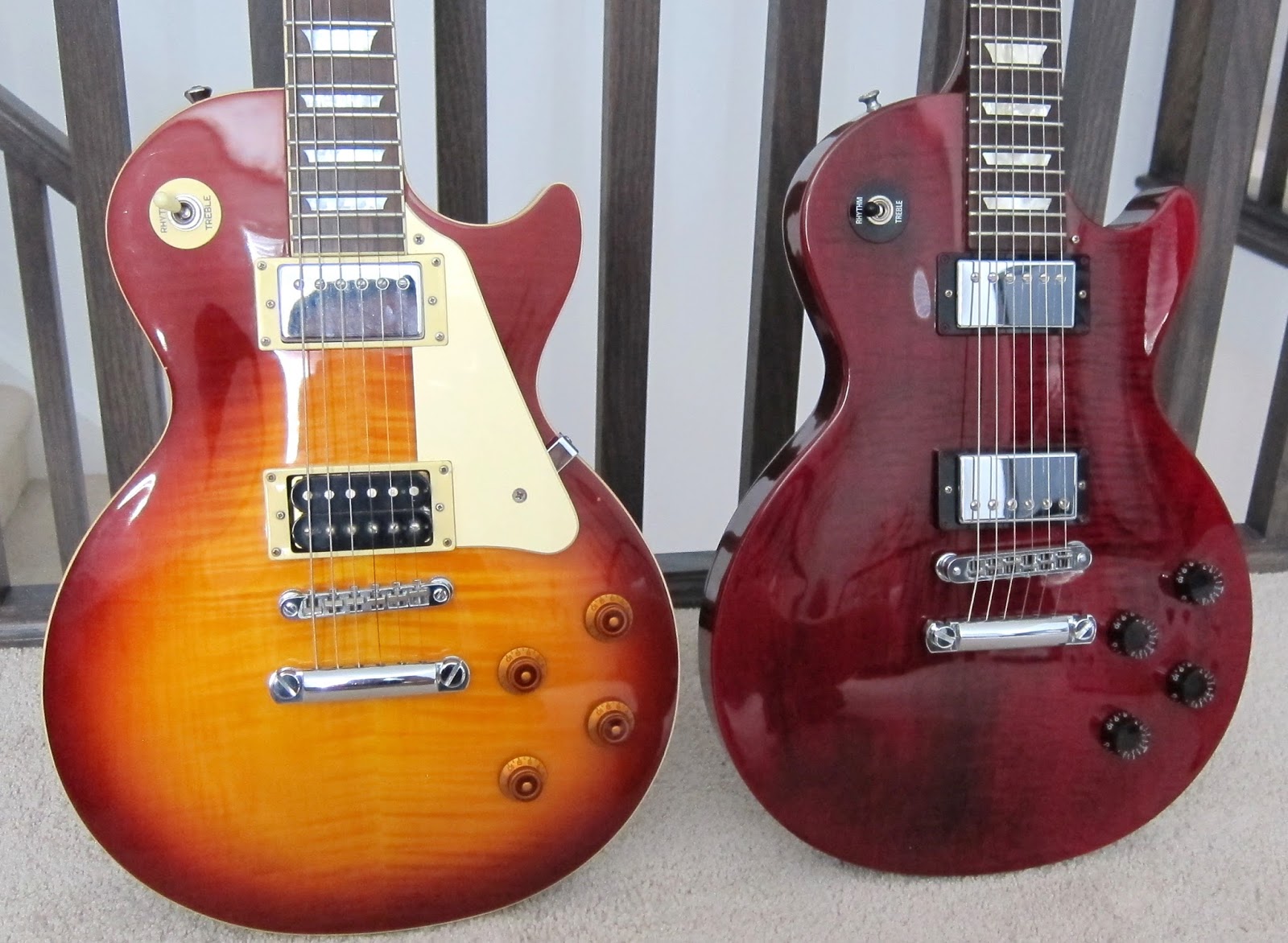Why an Epiphone Les Paul might be the Right Choice
Take it from someone who has lived through this not once, but twice: No matter how much you try and tell yourself that your Les Paul Studio is every bit as much a Les Paul as a Classic or Standard, deep down you know you're lying to yourself.
That is NOT properly book matched; Below the bridge there is a bunch of flame on the lower half with the control, and next to none on the big, open upper bout. If I have to spend $2,100 on a guitar, this is the kind of attention to detail I'd be looking for.
Sadly, Gibson has come up short.
I'm not saying that Studio's can't sound great - they absolutely can. When you want a Les Paul though, you want a something-burst, binding on the neck and top, full-fat Les Paul. You want Jimmy Page, not Jimmy Eat World*.
*This is pretty unfair to Jimmy Eat World, as a quick Google search yields pictures of them playing Les Paul Standards in various bursts.
Are you a Dentist?
At some point in the future, Gibson is going to abandon it's policy of only making guitar with "Gibson" on the headstock in the USA, move some production to Korea, and start offering Les Pauls with binding, bursts, and the big "G" on the headstock for under two grand.
Write it down. It'll happen.
Quality control will be better too, but I'll get to that later.
Until then though, you're going to have to shell out somewhere between two and three grand in order to scratch that very particular itch. If you're not 100% committed to owning a Gibson Les Paul, that's a pretty considerable chunk of change to drop in order to fill out your arsenal.
Consider that for the same three grand, you could have a signature Fender Stratocaster and your choice of some pretty outstanding amps. Oh, and if you decide you don't like them, you can sell them for roughly the same value you bought them for (unless you paid too much in the first place, in which case, you're an idiot).
Why can't you do the same with a Les Paul Standard then?
Quality Control
The truth of the matter is that Gibson has been going through the better part of a decade with quality control being the giant suffocating weight around its neck. So sure, you can buy a 2010-16 Les Paul Standard on the used market for under two grand, but good luck with that. I'd say you have a 50/50 shot of getting something without issue.
Another problem I've noticed is how poorly the book matching is on the maple tops. Flame should be near symmetrical, as the top wood is sawed in two much in the same way you'd open a book. The result is that the figure changes equally as it moves away form the centre line, except if you don't do it right, it doesn't. Check out this 2016 Gibson Les Paul Traditional for sale:
Another problem I've noticed is how poorly the book matching is on the maple tops. Flame should be near symmetrical, as the top wood is sawed in two much in the same way you'd open a book. The result is that the figure changes equally as it moves away form the centre line, except if you don't do it right, it doesn't. Check out this 2016 Gibson Les Paul Traditional for sale:
That is NOT properly book matched; Below the bridge there is a bunch of flame on the lower half with the control, and next to none on the big, open upper bout. If I have to spend $2,100 on a guitar, this is the kind of attention to detail I'd be looking for.
Sadly, Gibson has come up short.
Yes, we know that the guy who used to run Levis is now running Gibson, and we're supposed to all be excited that he rides a motorcycle and wears a leather jacket, but give me a break. It isn't like Levis doesn't have their own market share problems.
In any case, the jury is still out on the QC turnaround, and it'll be a couple of years until the used market starts revealing the fruits of said labour. Until then, any and all used Gibson Les Paul Standards should be treated with equal part skepticism and derision.






Comments
Post a Comment